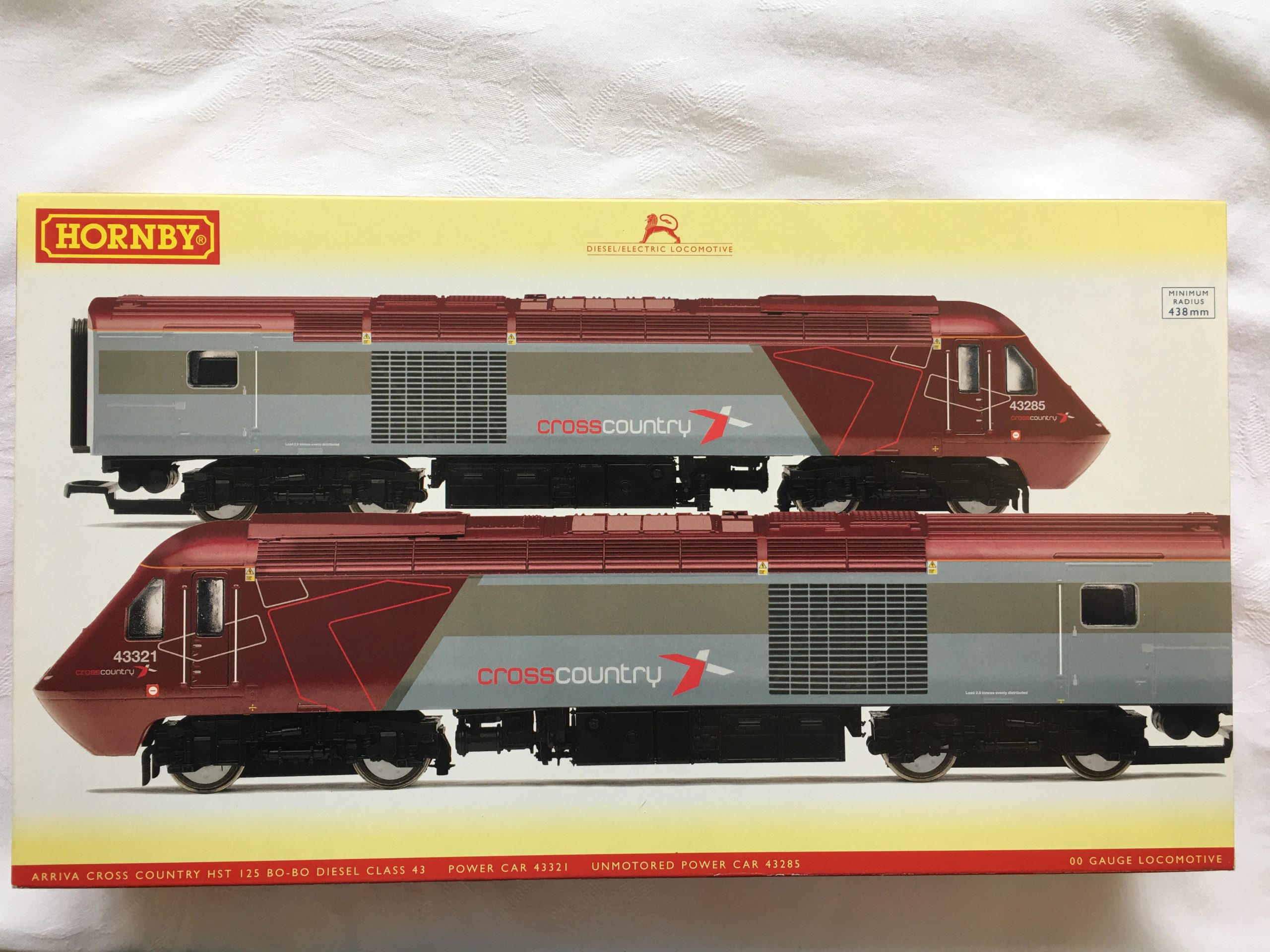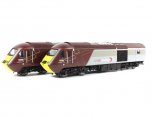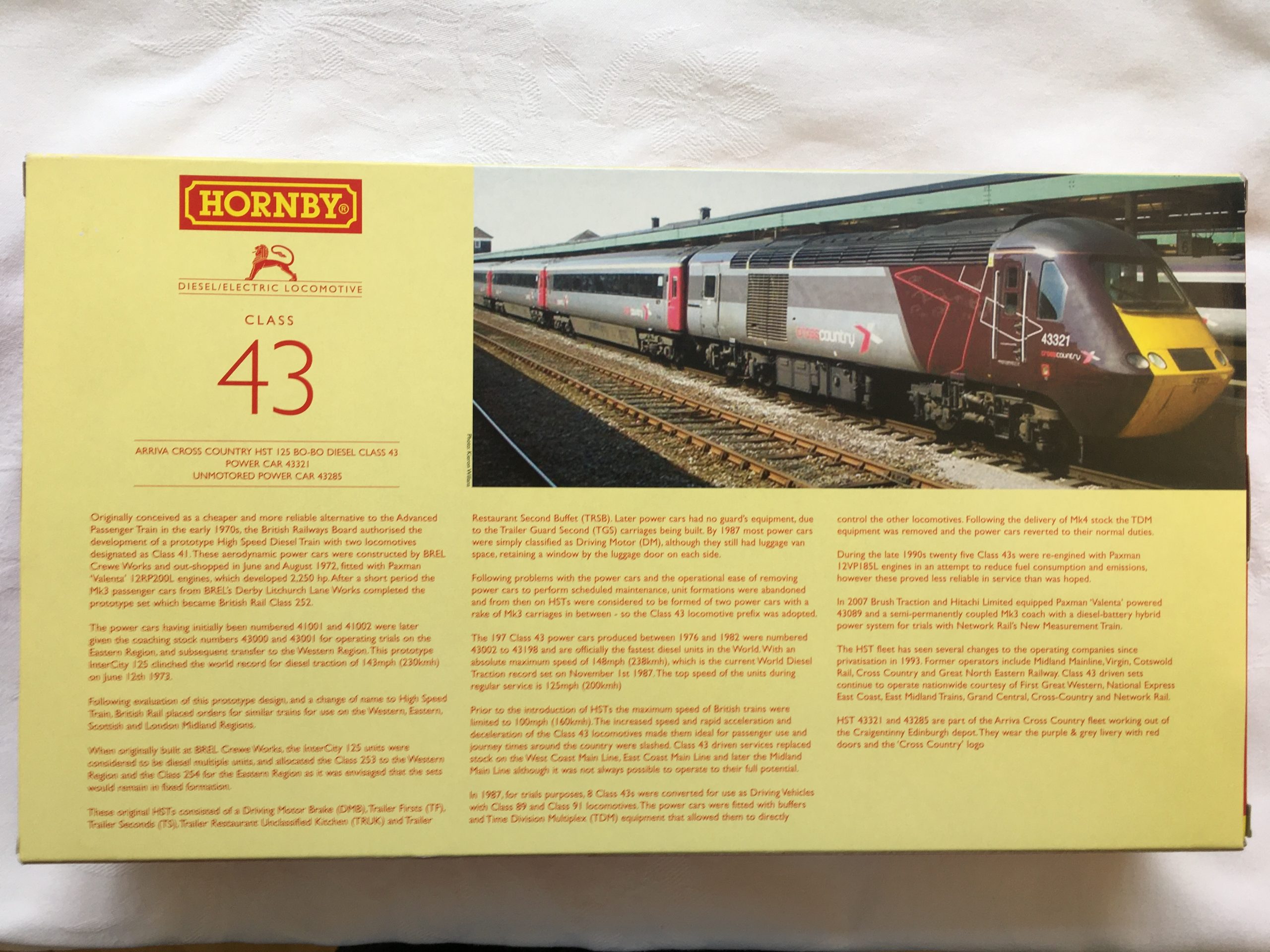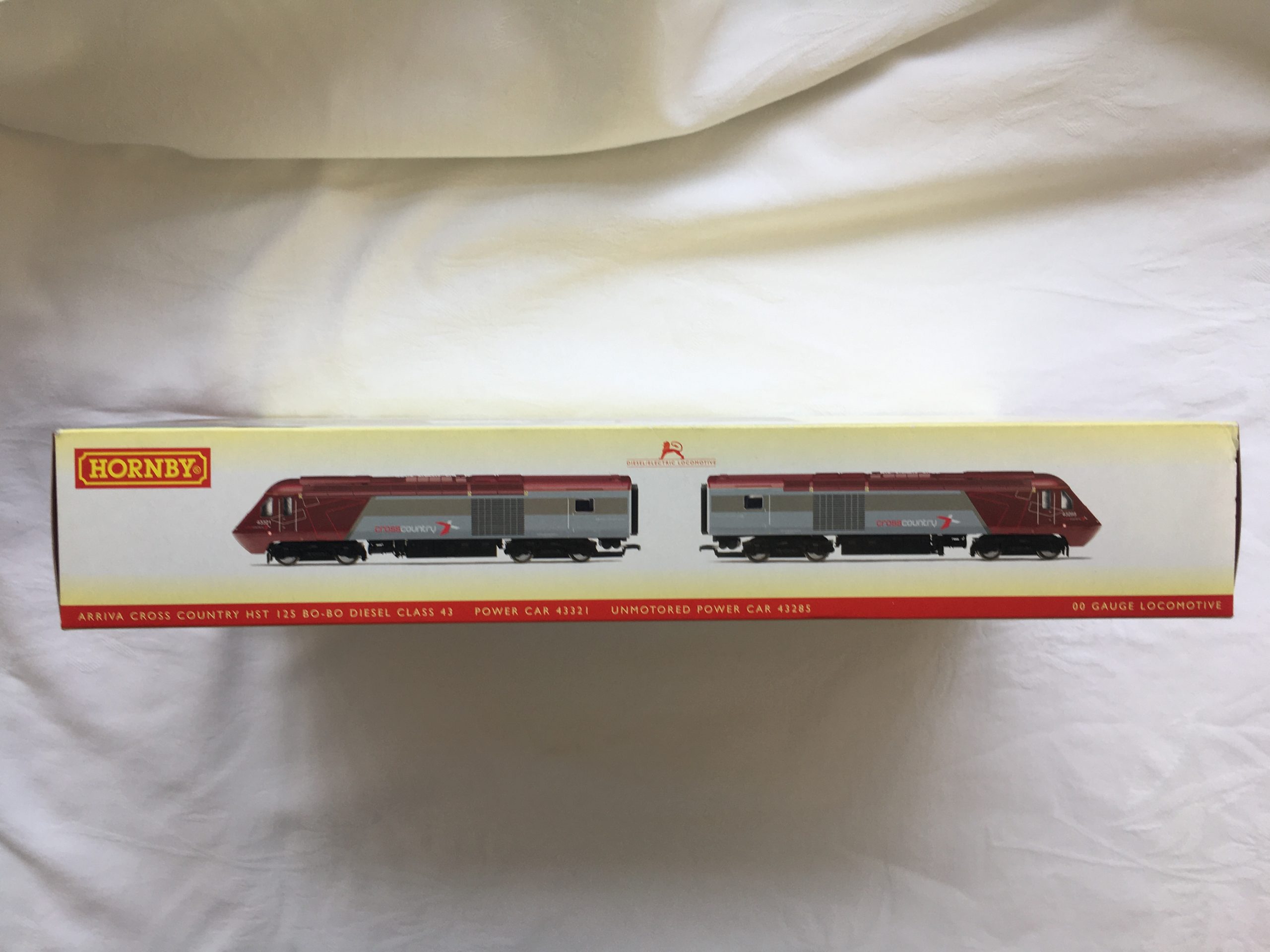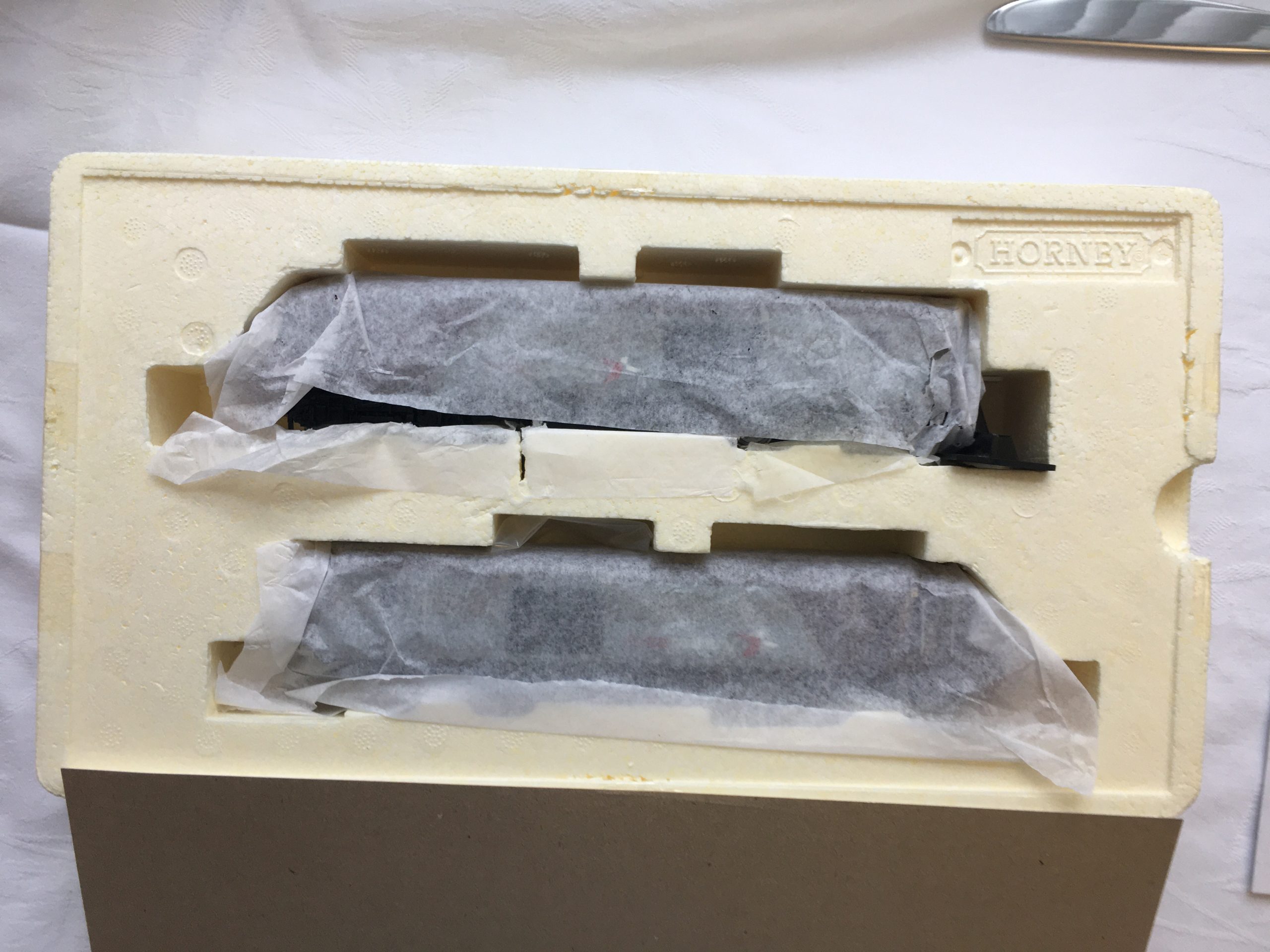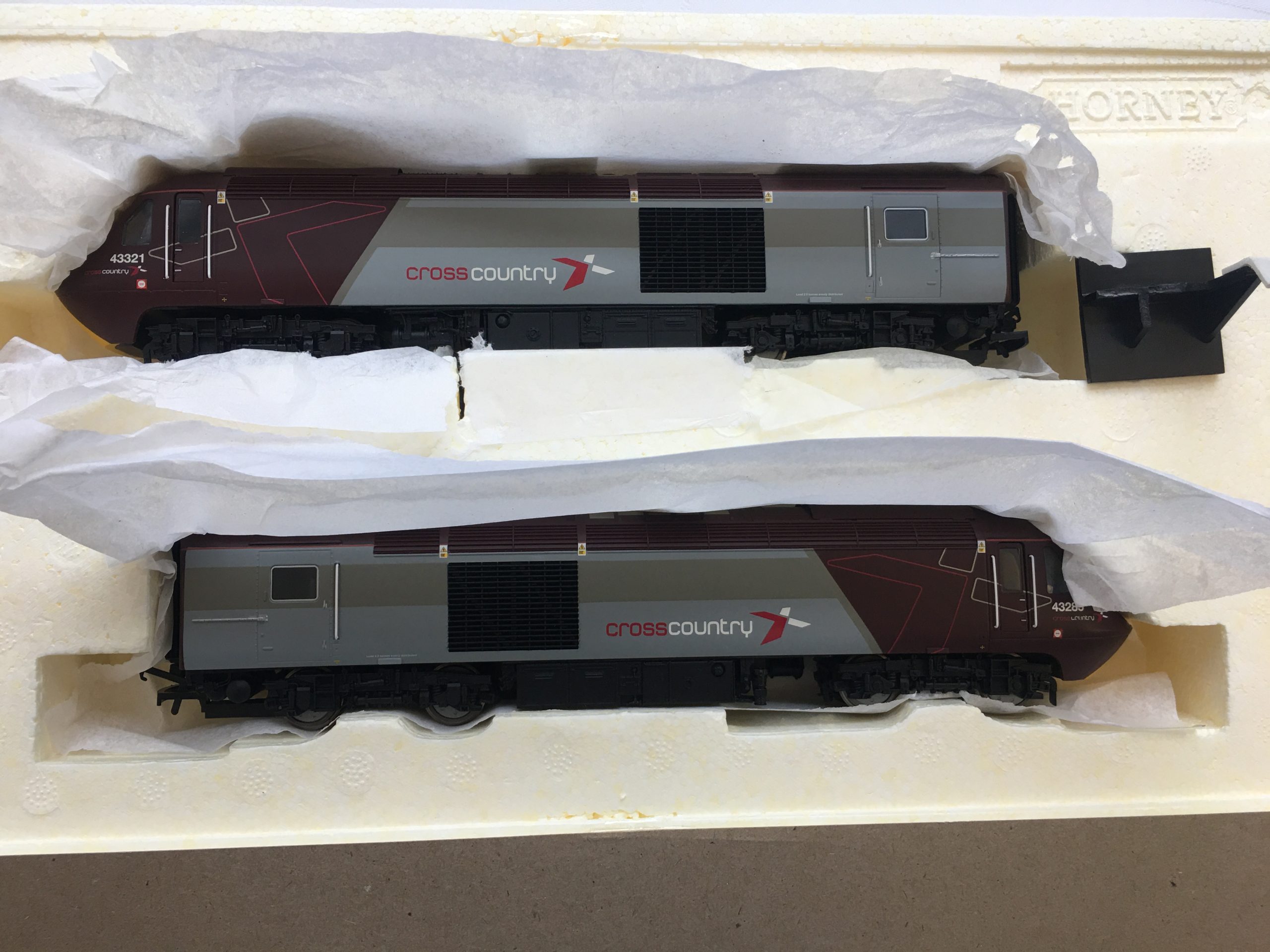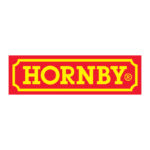You are here:
Hornby R2949X Arriva Cross Country Class 43 HST
Hornby R2949X Arriva Cross Country Class 43 HSTDiscontinued by manufacturer
Out of stock
Description
Hornby R2949x Arriva Cross Country Class 43 HST Discontinued by manufacturer
As with all Hornby it is suitable to run with Bachmann Airfix Dapol 00 Mainline Replica Lima Heljan Oxford Rail et al.
Originally conceived as a cheaper, more reliable alternative to the Advanced Passenger Train in the early 1970s, the British Railways Board authorised the development of a prototype High Speed Diesel Train with two locomotives designated as Class 41. These aerodynamic power cars were constructed by British Railways Engineering Ltd at their Crewe Works and emerged in June and August 1972, fitted with Paxman Valenta 12RP200L engines, developing 2,250 hp.
The power cars, having initially been numbered 41001 and 41002, were later given the coaching stock numbers 43000 and 43001 for operating trials on the Eastern Region and subsequent transfer to the Western Region. Following evaluation and a change of name to High Speed Train, British Rail placed orders for similar trains for use on the Western, Eastern, Scottish and London Midland Regions.
When originally built at BREL’s Crewe Works, the InterCity 125 units were considered to be diesel multiple units and allocated as Class 253 to the Western Region and Class 254 for the Eastern Region. With the introduction of Trailer Guard Second (TGS) carriages, later power cars had no guard’s equipment installed and by 1987 most power cars were simply classified as Driving Motor (DM), although they still had luggage van space, retaining a window by the luggage door on each side.
Following problems with the power cars and the operational ease of removing power cars to perform scheduled maintenance, unit formations were abandoned, resulting in the Class 43 locomotive prefix being adopted. The 197 Class 43 power cars produced between 1976 and 1982 were numbered 43002 to 43198 and are officially the fastest diesel units in the world. The units have an absolute maximum speed of 148mph (238kph), which is the current world diesel traction record, set on November 1, 1987.
In 1987, for trial purposes, eight of the Class 43s were converted for use as Driving Vehicles with the Class 89 and Class 91 locomotives. The power cars were fitted with buffers and Time Division Multiplex (TDM) equipment that allowed them to directly control the other locomotive. Following the delivery of British Rail’s Mk 4 coaching stock, the TDM equipment was removed and the power cars reverted to their normal duties, retaining their buffers. During the late 1990s, twenty five of the Class 43s were updated with Paxman 12VP185L engines in an attempt to reduce fuel consumption and emissions; however these proved to be less reliable in service than was hoped.
The HST fleet has seen many changes to the Train Operating Companies since privatisation in 1993, but Class 43 driven sets continue to operate across the rail network, despite being displaced from some East Coast and West Country routes by the arrival of Hitachi’s IEP 800 units. First Great Western, East Midlands Trains, Cross-Country and Network Rail continue to operate Class 43 units and displaced units from First Great Western have been sent to Scotland, to operate under ScotRail.
43078 was built at Crewe, along with 43079 and the locomotives entered traffic on February 17, 1978. 43078 carried the name Golowan Festival Penzance between June 22, 1996 and November 30, 2003, having previously been named as Shildon, County Durham and subsequently as Rio Crusader. 43079 carried no name during the same period as 43078 Golowan Festival Penzance but was subsequently named Rio Venturer. The two locomotives are currently unnamed.
43041 was built at Crewe and entered traffic on February 28, 1977, while 43005 entered traffic on September 30, 1976. 43041 carried the name ‘City of Discovery’ between June 27, 1990 and June 30, 2011, before being renamed as ‘Meningitis Trust Support for Life’ on July 1, 2011, while 43005 has remained unnamed. At 14:09 on July 10, 2010, 43041 was involved in a 90mph collision with a tree at Lavington, near Westbury, whilst operating the 1C84 13:06 Paddington to Penzance service. The train did not derail and came to a halt 1km from the collision site, but despite extensive damage to 43041’s cab, the driver escaped with only minor injuries.
Specification
| Gauge | 00 |
| Length | 2 x 235mm |
| DCC Type | DCC Ready |
| Lighting | Bi-directional front white (3 of) rear red (2 of) |
| Period/ERA | Era 9 – 11 – Post privatisation (1995 onwards) |
| Operator/Livery | Cross Country, Purple/Grey |
| Designer | Sir Kenneth Grange |
| Entered Service | 1978 |
| Minimum Curve | R2 |
| Motor | 5 Pole Skew Wound |
| Wheel Configuration | Bo-Bo |
| No of Axles Driven | Motorised Car – 4 driven through double flywheel and Cardan driveshafts |
| Cab | Detailed and internal LED lighting with manual opening cab doors. Rotating fans in motorised power car and dummy fan in in dummy power car |
| Drive | Drive on all axles of the motorised car using Cardan shafts coupling from motor to drive bogie gearboxes. |
| Build Structure | Plastic body and cast alloy chassis on the motorised car with plastic chassis on the non-motorised car. Roof body and bogie detailing. |
| Availability from Manufacturer | Discontinued |
| Age Suitability | 14+ |
Additional information
| Weight | 3000 g |
|---|---|
| Brand | Hornby |
| Condition | New |
| Scale | OO/HO Gauge |
Related Products
Related products
-
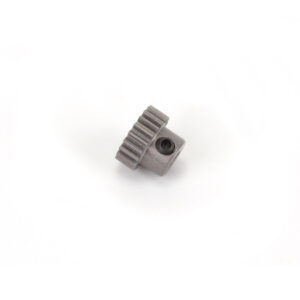
Schumacher U3425 PINION HARD ALLOY 48DP – 25T
£3.99Out of stock

